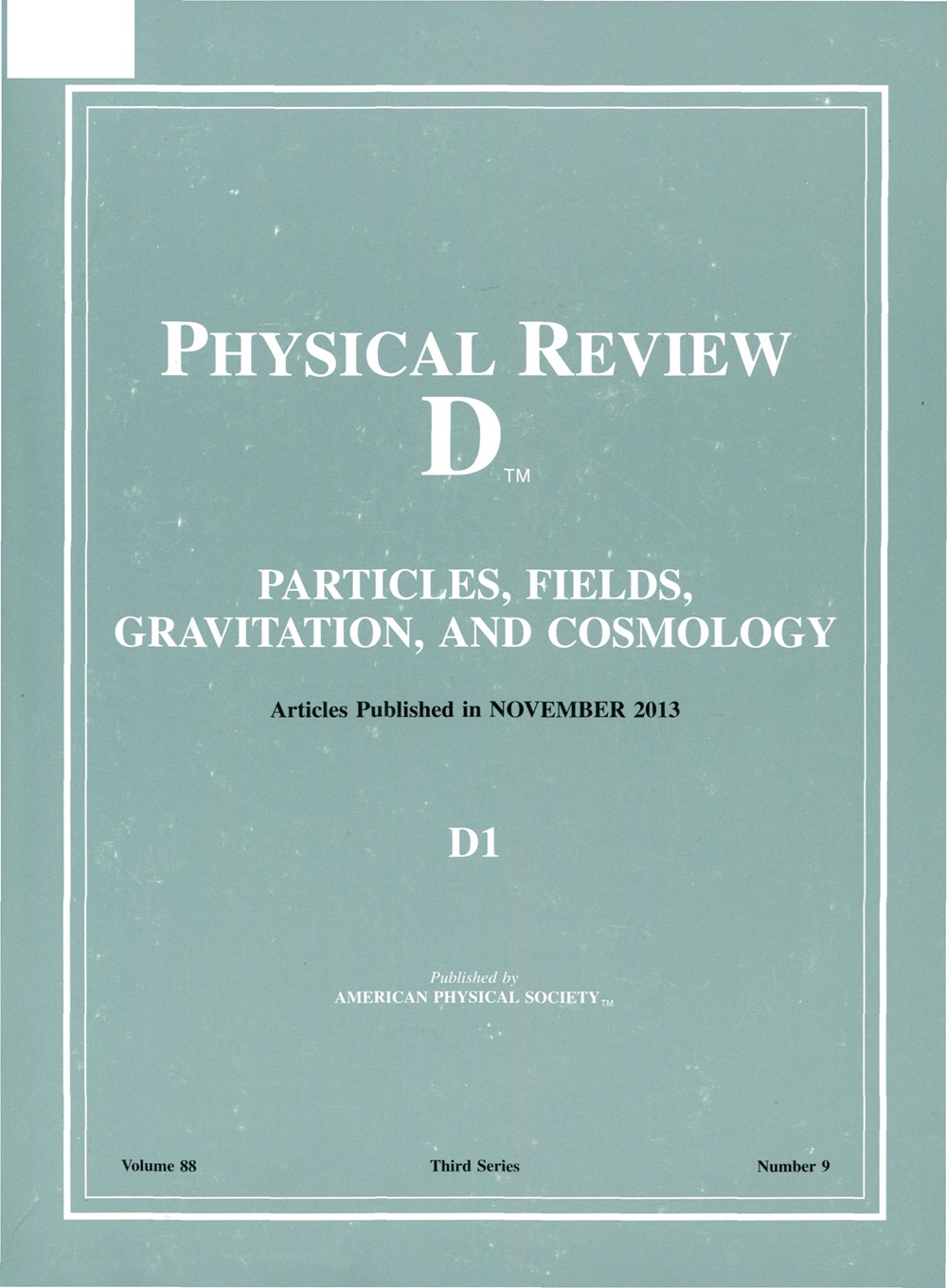Double white dwarf tides from multimessenger measurements
IF 5.3
2区 物理与天体物理
Q1 Physics and Astronomy
引用次数: 0
Abstract
Short-period Galactic double white dwarf (DWD) systems will be observable both in visible light through photometric monitoring and in mHz-range gravitational waves (GWs) with forthcoming space-based laser interferometry such as the Laser Interferometer Space Antenna. When only photometric variability is used to measure DWD intrinsic properties, there is a degeneracy between the chirp mass and binary tidal interaction, as the orbital frequency time derivative is set by both GW radiation and tides. Without expensive radial velocity data from spectroscopic monitoring, this degeneracy may be lifted in principle by directly measuring the second time derivative of the orbital frequency through photometric monitoring over an ultralong time baseline. Alternatively, the degeneracy can be removed by exploiting information in both photometric variability and the coherent GW waveform. Investigating both approaches, we find that direct measurement of the second time derivative is likely infeasible for most DWDs, while the multimessenger method will disentangle measurements of the chirp mass and the binary moments of inertia for a large sample of tidally locked systems. The latter information will enable empirical tests of white dwarf structure models with finite temperature effects.多重信使测量的双白矮星潮汐
短周期星系双白矮星(DWD)系统将通过光度监测在可见光下观测到,并通过即将到来的天基激光干涉测量(如激光干涉仪空间天线)在兆赫范围的引力波(GWs)中观测到。当仅使用光度变率来测量DWD本征性质时,啁啾质量与二元潮汐相互作用之间存在简并性,因为轨道频率时间导数由GW辐射和潮汐共同设定。不需要从光谱监测中获得昂贵的径向速度数据,原则上可以通过在超长时间基线上通过光度监测直接测量轨道频率的二阶导数来解除这种简并。或者,可以通过利用光度变异性和相干GW波形中的信息来消除简并。研究这两种方法,我们发现直接测量二阶导数对大多数DWDs来说可能是不可行的,而多信使方法将解开对大样本潮汐锁定系统的啁啾质量和二元惯性矩的测量。后一种信息将使具有有限温度效应的白矮星结构模型的经验检验成为可能。
本文章由计算机程序翻译,如有差异,请以英文原文为准。
求助全文
约1分钟内获得全文
求助全文
来源期刊

Physical Review D
物理-天文与天体物理
CiteScore
9.20
自引率
36.00%
发文量
0
审稿时长
2 months
期刊介绍:
Physical Review D (PRD) is a leading journal in elementary particle physics, field theory, gravitation, and cosmology and is one of the top-cited journals in high-energy physics.
PRD covers experimental and theoretical results in all aspects of particle physics, field theory, gravitation and cosmology, including:
Particle physics experiments,
Electroweak interactions,
Strong interactions,
Lattice field theories, lattice QCD,
Beyond the standard model physics,
Phenomenological aspects of field theory, general methods,
Gravity, cosmology, cosmic rays,
Astrophysics and astroparticle physics,
General relativity,
Formal aspects of field theory, field theory in curved space,
String theory, quantum gravity, gauge/gravity duality.
 求助内容:
求助内容: 应助结果提醒方式:
应助结果提醒方式:


